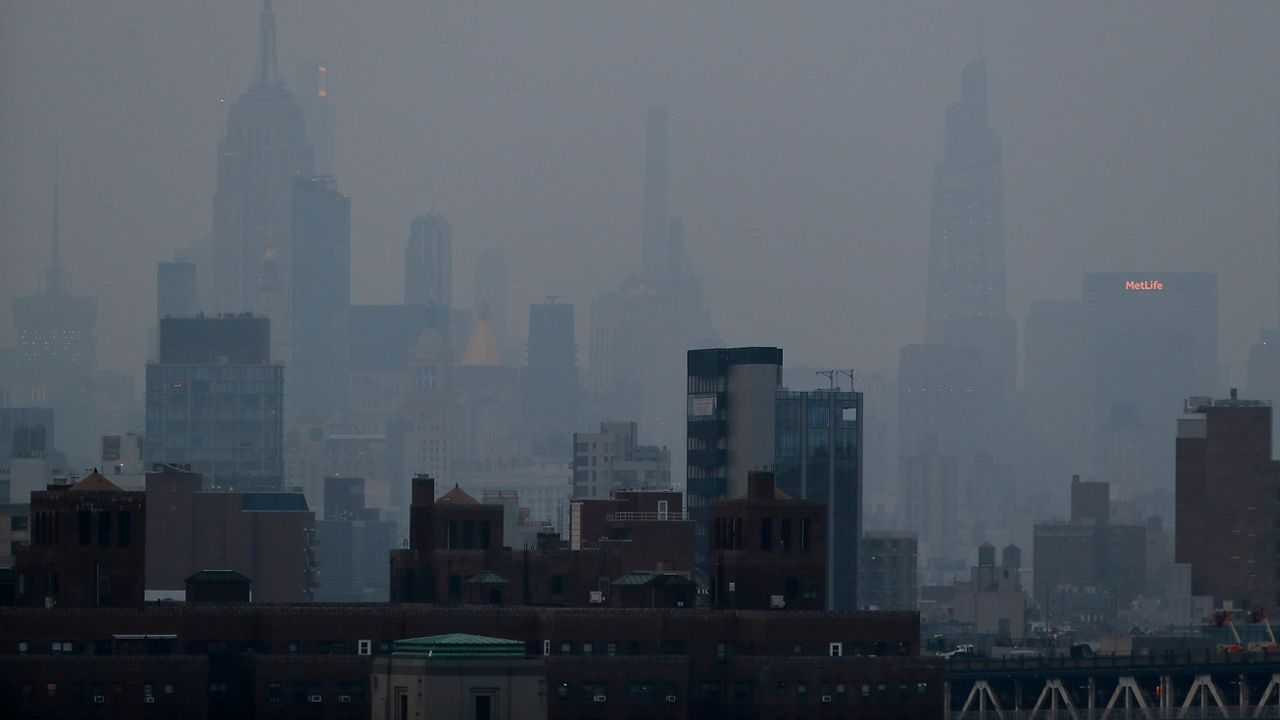Most historians today marked 2025 as the 400th year since New York City was founded — linking the city’s start with the construction of Fort Amsterdam by Dutch settlers.
But the city’s birth year has been up for debate, with the city’s seal once putting it at 1664.
What You Need To Know
- Most historians today mark 2025 as the 400th year since New York City was founded — linking the city’s start with the construction of Fort Amsterdam by Dutch settlers
- Russell Shorto consulted old translations tracing British explorer Henry Hudson’s route, who was then-employed by Dutch traders, and traveled in the region nearly 15 years before the construction of Fort Amsterdam in 1625. The following year, records and legend say Manhattan was sold for $24 by Native Americans to settlers
- In 1664, the British took over, and the land was renamed New York as a gift to the Duke of York, brother of King Charles the Second
“This was kind of the prime real estate. This island, Manhattan. The Hudson River goes up to the Mohawk. The Mohawk goes all the way west to the Great Lakes. Rivers were highways. That was your way to get access, ultimately, to the interior. So this was sort of it for them, the missing piece,” Russell Shorto, the director of the New Amsterdam Project at the New York Historical and author of a new book, “Taking Manhattan,” said.
Almost at first sight for European voyagers arriving at the turn of the sixteenth century, New York City had the makings to become “the greatest city in the world” as the Broadway musical “Hamilton” dubbed it.
“The Dutch West India Company was trying to make money. They were interested in furs and beaver pelts. Then they started planting tobacco and then, being entrepreneurs, they started doing all kinds of things,” Shorto said.
Shorto consulted old translations tracing British explorer Henry Hudson’s route, who was then-employed by Dutch traders, and traveled in the region nearly 15 years before the construction of Fort Amsterdam in 1625.
The following year, records and legend say Manhattan was sold for $24 by Native Americans to settlers.
“They all had trade networks with the Caribbean, with South America, with different parts of Europe. So, it became this very dynamic little kind of a wild west town,” Shorto said.
Inside the city’s Municipal Archives at 31 Chambers Street, record keepers assembled mapping services showing the period between 1645 and 1680 in an exhibit called “New Visions of Old New York.”
“Collections are very paper heavy, and they document legal transactions like land ownership and trade deals. And this exhibit helped us really colorize some of those instances and highlight women,” Sylvia Kollar, the director of the city’s Municipal Archives, said.
What New Yorkers know as Washington Square Park in Greenwich Village, marks the site where ten enslaved men won freedom for themselves but not their families.
And in Gravesend, Brooklyn, one of the few places owned by a woman, British settler Deborah Moody.
But there’s also debate over when exactly New York was born.
“In 1625, they set up a colony here on Manhattan Island. That time, they set up a government structure. So if you’re counting from the government, that’d be 1625 as you’re doing the 400th year. Now, the Dutch looked to 1624 when they first arrived,” Kenneth Cobb, the Municipal Archives’ assistant commissioner, said.
It’s no accident that Wall Street still stands as the symbol of the free world and is practically the financial capital of the world.
It’s also the site of the centuries-old wall surrounding that first settlement, where trade and protection alliances with the native Lenni Lenape Native Americans were key.
The principles upheld by the early settlers on Manhattan Island are familiar to New Yorkers today.
“They had pioneered the idea of religious toleration, so, allowing people from different religions to live together. So, that gives you a multiethnic, multilingual society. And they pioneered capitalism long before the word existed. And if you put those two things together, you get New York,” Shorto said.
In 1664, the British took over, and the land was renamed New York as a gift to the Duke of York, brother of King Charles the Second.
“Richard Nichols comes leading this English force, but he has his own idea. He’s the one, I think, who realized that even though he’s got all these soldiers and weapons, he doesn’t want to take it by force, because he recognizes that what they’ve built here is special,” Shorto said.
The way of life sharply contrasted with British colonies in Boston and Virginia, run by the religiously intolerant Puritans. Then, despite being at odds with the Dutch, the British decided New York was nearly perfect as it was.
“New York has such a deep history, and its history is so influenced so greatly by America’s history — but New York kind of paves it over and keeps going. So, you have to kind of stop and say to the city, for example, to the city government, look, this is important! We should value this. We should cherish it and celebrate!” Shorto said.
